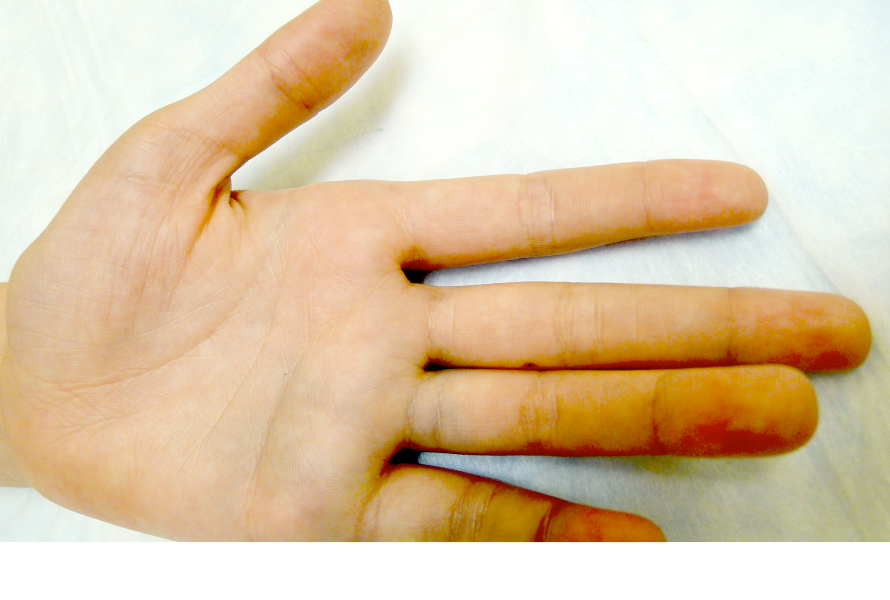
This is a common question we get from parents over the phone, and sometimes from our referring pediatricians.
Surprisingly, there are no good studies that have looked at what factors predict a child to have a fracture following an injury. There are, however, several factors that we see frequently when children have fractures.
First, the pain that kids have is sustained (it lasts more than a few minutes) and it is localizable to a specific area on their hand. Second, often there is bruising, or ecchymosis as we like to call it in medicine, in the injured limb. The child’s hand above shows subtle ecchymosis in the region of the small finger of the hand.
In cases where the fracture is displaced your child’s finger may look like it is aligned differently than the others. Sometimes this is noticed only when he bends his fingers, which is a hard thing to get him to do when it hurts.


